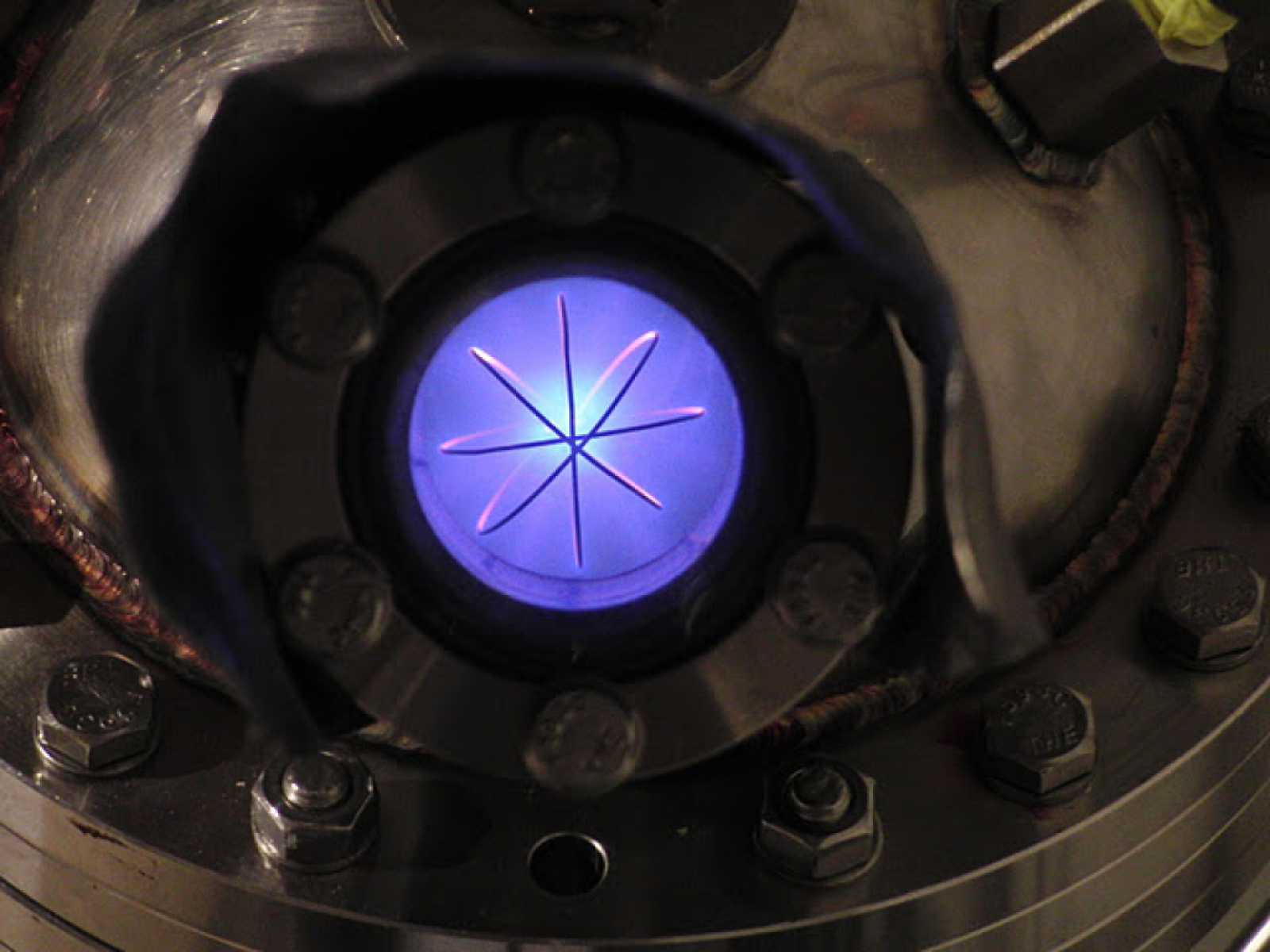IEC Fusion Reactors
I have received many questions about how exactly my reactor operates so here is a post explaining it. The inertial electrostatic confinement fusion reactor is a device that uses electrostatic fields to accelerate and confine a deuterium plasma to a central point, occasionally some of the deuterium ions in the plasma will collide, and fuse together into helium-3 and a high energy neutron, or hydrogen-3 and a proton.It must first be asserted that IEC fusion reactors are not cold fusion reactors, nor do they produce a net energy gain, rather they are typically very inefficient, very hot fusion reactors.The most well known type of IEC reactor, known as a farnsworth fusor, was first developed by Philo T. Farnsworth, and later by Robert Hirsch and Eugene Meeks. IEC Fusion is now currently being studied by a number of laboratories and universities, specifically University of Wisconsin, Madison.
How they work
The concept of fusor operation is much simpler in theory than in execution. Basically, I pump the bell jar down to a high vacuum, charge the inner electrode (outer one is grounded) to a high negative DC potential.Field emission from the grid causes the gas inside (air for non fusion, deuterium (2H) for fusion) the gas ions, as they are positively charged, are accelerated towards the negatively charged inner grid. They carry enough inertia to continue past the grid wires and collide in the center. The remixing of ions and electrons creates the plasma discharge.A vacuum chamber is brought to an extremely low pressure, typically around 5-10 millitorr, and filled with deuterium gas. Inside the vacuum chamber, a spherical grid of wires in the center of the chamber is charged to a very low negative potential, typically ranging from -20kV to more than -100kV. This grid ionizes the deuterium gas due to field emission. The positively charged ions of deuterium are then accelerated towards the negatively charged grid at a great speed, where some of them collide together and fuse into either He-3, emitting a neutron, or H-3, emitting a proton. The neutrons can be detected, and are often used as key proof of fusion.